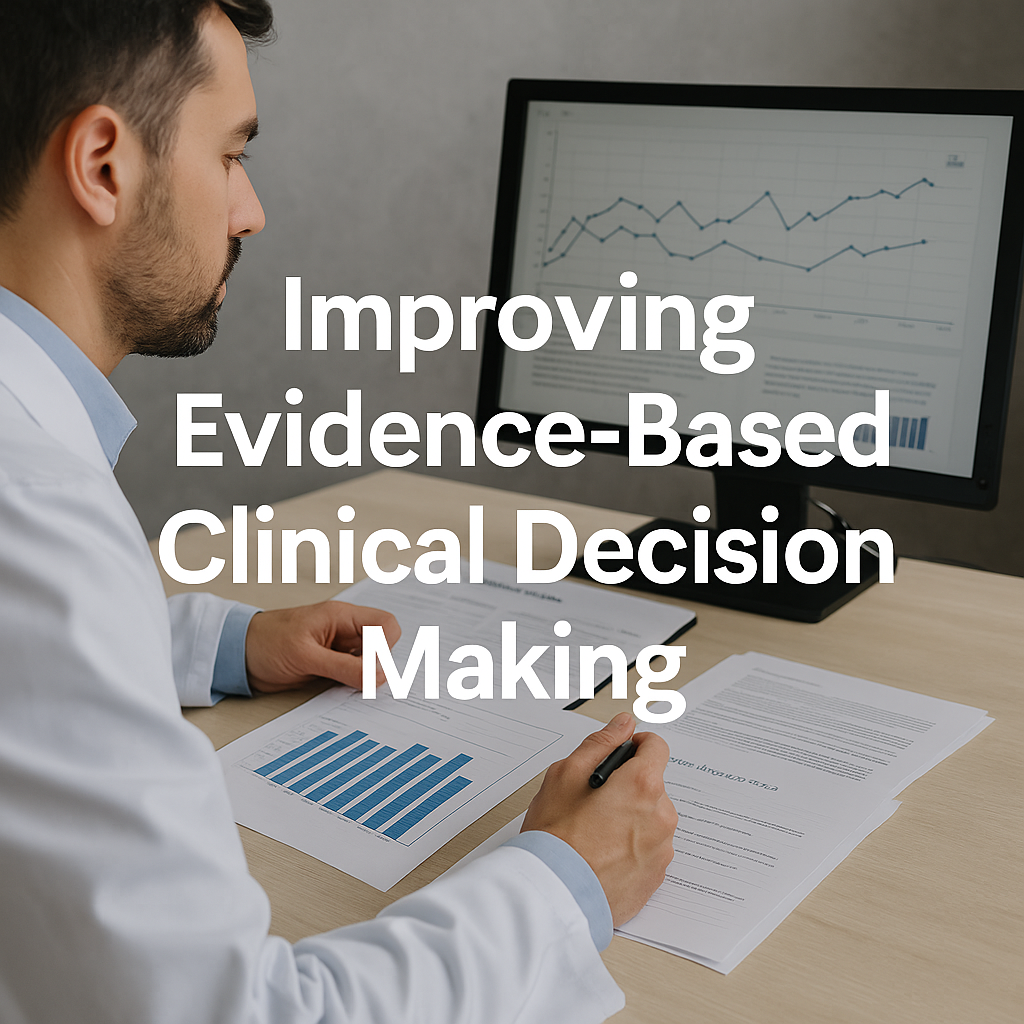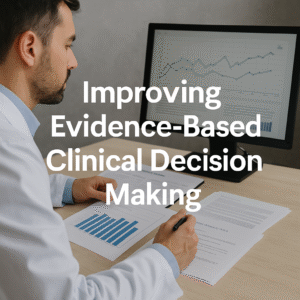Evidence-based clinical decision making is supposed to guide clinicians toward the best care—combining research, clinical expertise, and patient preferences. But what happens when the textbook doesn’t match the patient in front of you? What if the “best available evidence” doesn’t account for the real-world complexity of your clinic, your business model, or your patient population?
If you’ve run a growing clinic, you’ve likely hit this wall. In the first episode of Clinician’s Edge, hosts Craig Smith (clinician-founder) and Ryan Seltzer (systems and data strategist) break down what actually happens when evidence-based practice meets real-life healthcare—and how clinic leaders can bridge the gap.
🎧 Listen to Episode 1:
Spotify
The Evidence Doesn’t Always Fit
Evidence-based clinical decision making has value, but it’s built on research designs that often exclude the complexity of real patients. You may be referencing a high-quality systematic review, but the patient in your treatment room wouldn’t have even qualified for the study.
Your patients:
- Have multiple diagnoses or unclear mechanisms
- Don’t always respond to interventions as predicted
- Bring social, financial, and emotional factors into the room
- Often have pain or dysfunction that doesn’t match a neat textbook presentation
“The moment your patient wouldn’t meet the study’s inclusion criteria, the conclusions become interesting—but not necessarily applicable.” — Craig Smith
This doesn’t mean we abandon evidence. It means we contextualize it. And that starts with systems.
Why Evidence Fails Without Systems
In many growing clinics, care quality is built on the founder’s instincts—not an operational structure. Research may inform the founder’s thinking, but that thinking isn’t embedded in documentation, training, or patient management systems.
As you hire new staff, things begin to drift:
- New clinicians apply evidence differently—or not at all
- Documentation lacks clinical reasoning
- Patient plans vary widely depending on who’s treating
- Feedback is informal or emotionally charged
- Training becomes reactive and based on outside CEUs
These breakdowns aren’t about effort—they’re about the lack of a system to make evidence-based clinical decision making repeatable.

Systems Are the Missing Link
In this episode, Craig and Ryan argue that clinician-founders must build systems that make clinical reasoning visible, trainable, and improvable. The goal isn’t to copy-paste research—it’s to translate research into a real-world clinical decision-making framework.
That includes:
- Documentation that tracks not just what was done, but why
- Shared clinical language across your team
- Structured pathways that reflect your standards
- Internal feedback loops that surface when things go off track
“If your best clinician gets a great outcome, can you explain why—and teach it to someone else?” — Ryan Seltzer
If the answer is no, it’s not a clinician issue—it’s a system issue.
How This Ties Into the 7 Pillars
Amptimum’s approach to scaling care quality rests on seven foundational systems. This episode introduces three of the most important pillars for turning evidence into real-world outcomes:
- Pillar 1: Clinical Process
A shared reasoning structure that guides patient care decisions - Pillar 2: Documentation & Data
A system that captures clinical thinking, not just billing codes - Pillar 5: Quality Improvement Infrastructure
A feedback loop to detect, discuss, and resolve care drift across the team
Without these, evidence-based clinical decision making becomes performative—something clinicians claim to use but can’t operationalize consistently across the organization.
What to Build Instead
The best clinics aren’t run by founders who memorize research. They’re built on systems that make smart decisions repeatable, even when the founder isn’t in the room.
That means:
- Rethinking documentation as a clinical thinking tool
- Training teams internally—not just relying on external CEUs
- Using internal data to spot patterns and inform decisions
- Teaching clinicians how to apply evidence within your business model and patient population
In short, your systems should carry the weight—not your memory or presence.
The Bottom Line
Evidence-based clinical decision making doesn’t fail because research is flawed. It fails when the clinic has no system to apply, test, and improve it.
Ask yourself:
- Would documentation in your clinic show how decisions were made?
- Can a new clinician reproduce your outcomes without hallway coaching?
- Would you catch a drift in care quality before a patient complains?
If the answer is “no,” you don’t need another journal article—you need a better system.
🎧 Listen to the full episode:
Research Says… But Does It? The Real Role of Evidence in Clinical Practice
Spotify


